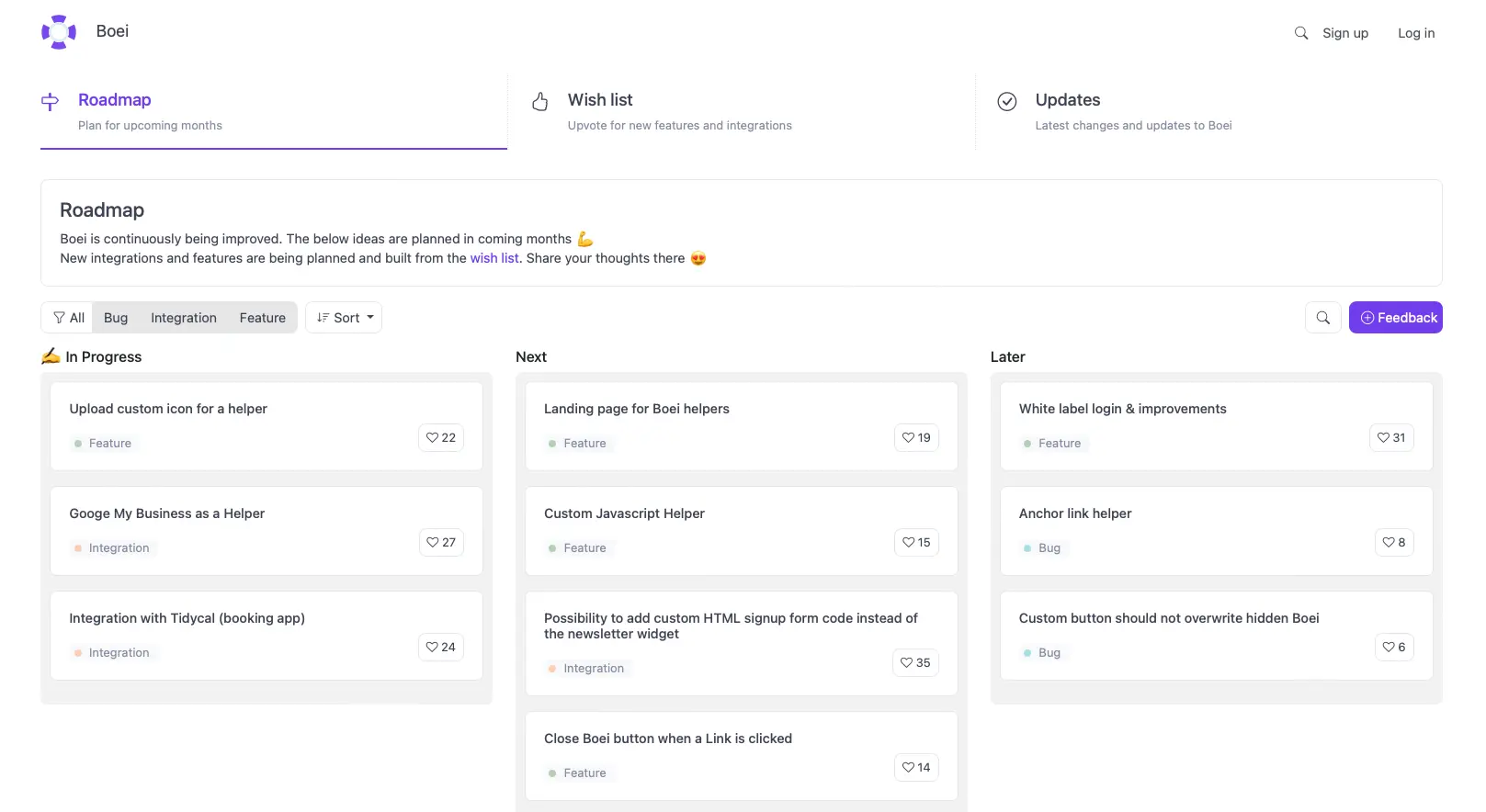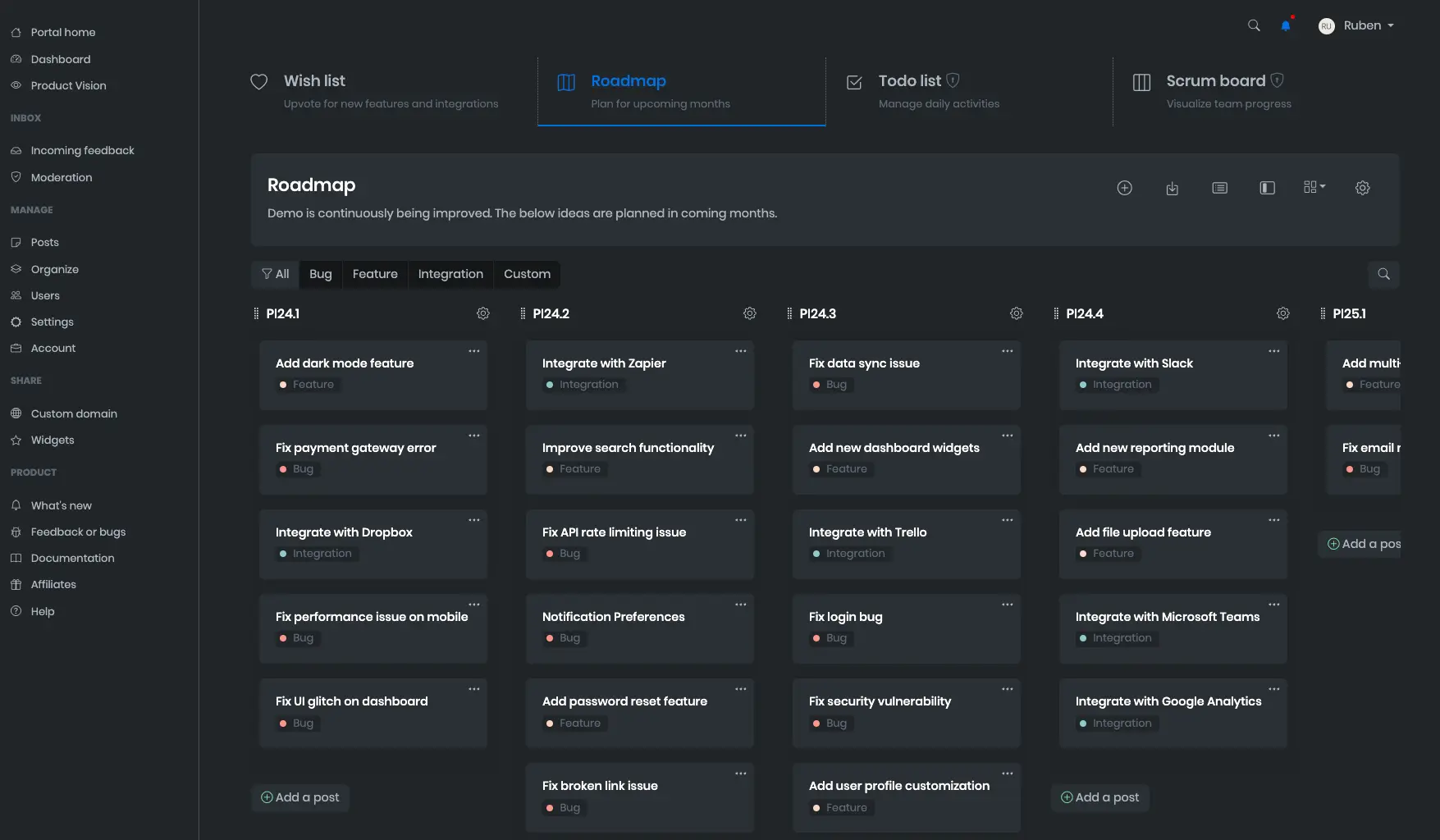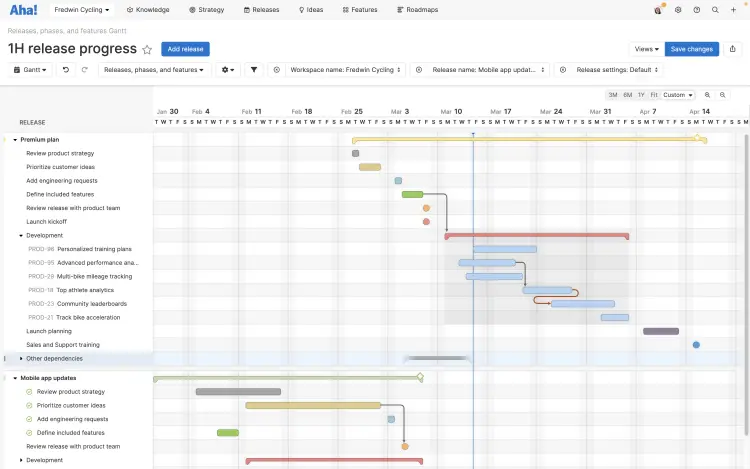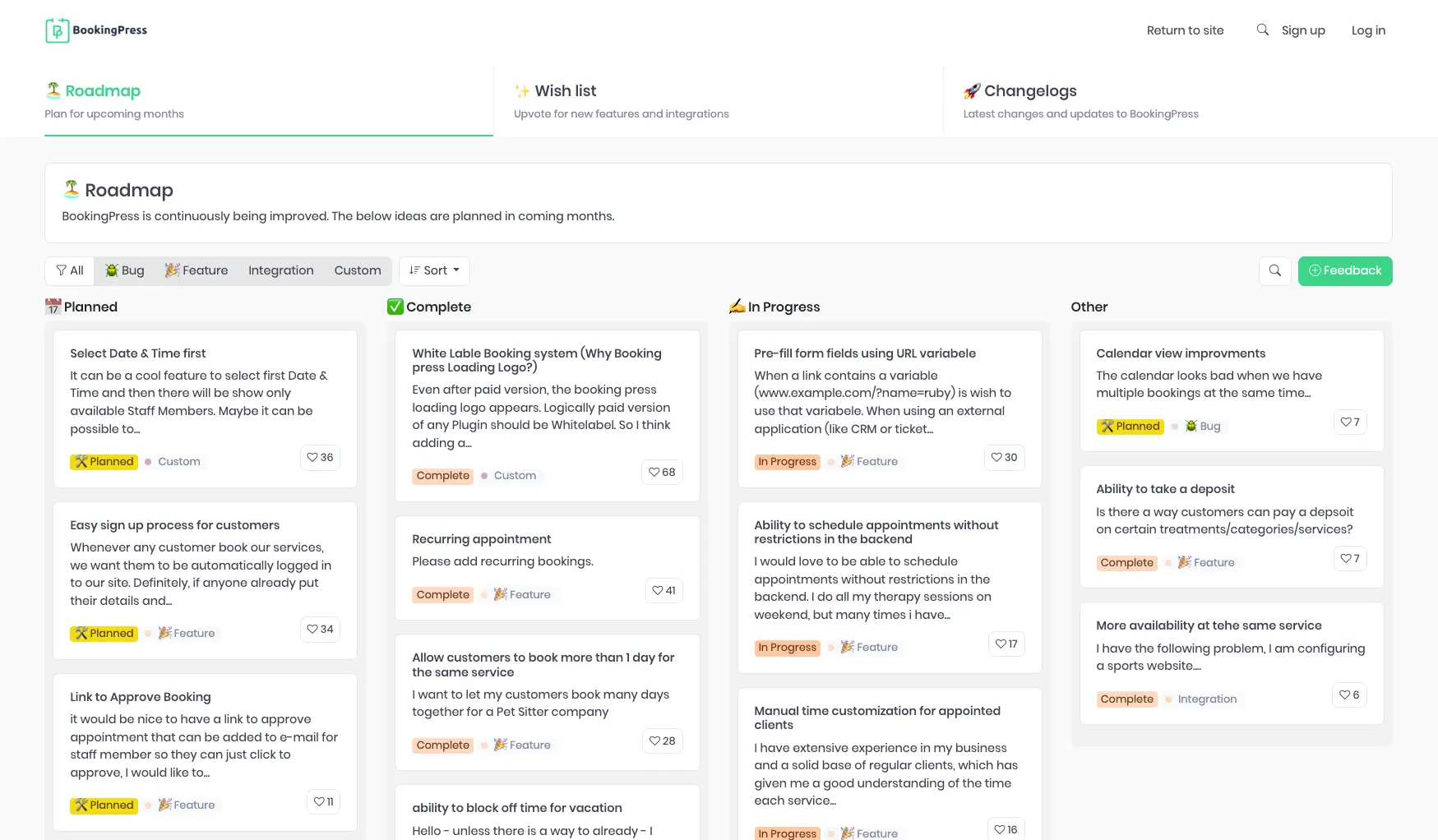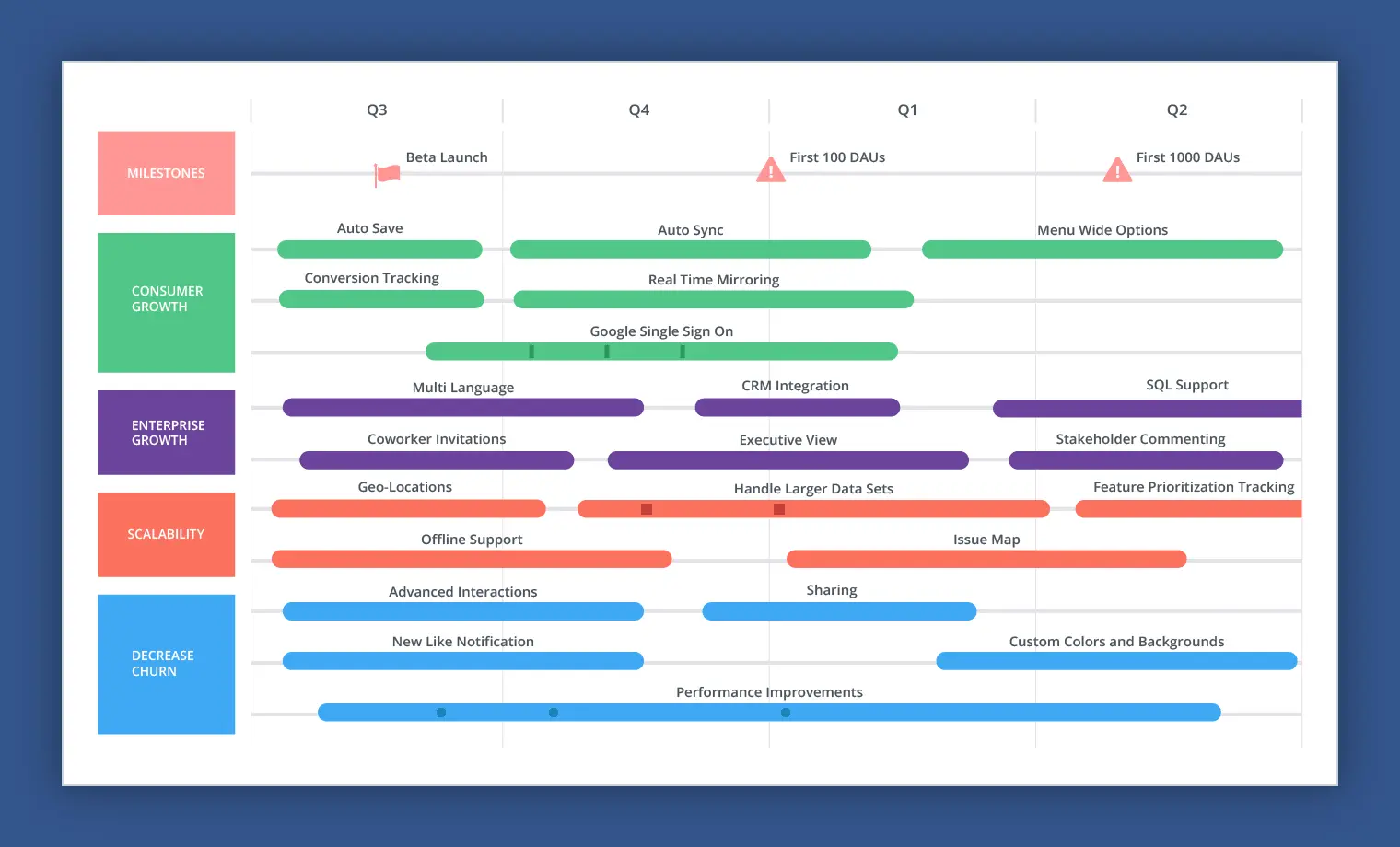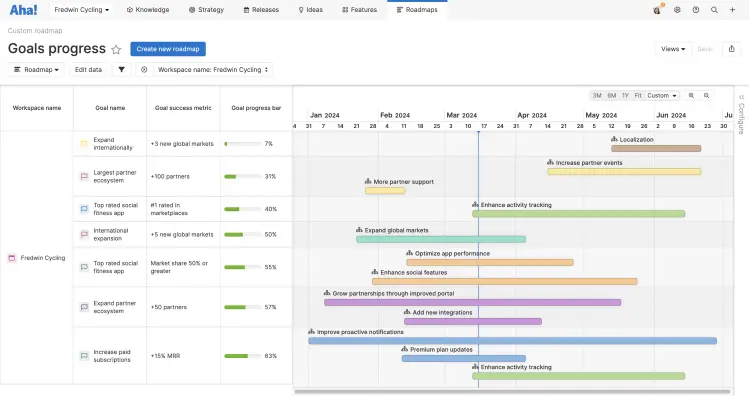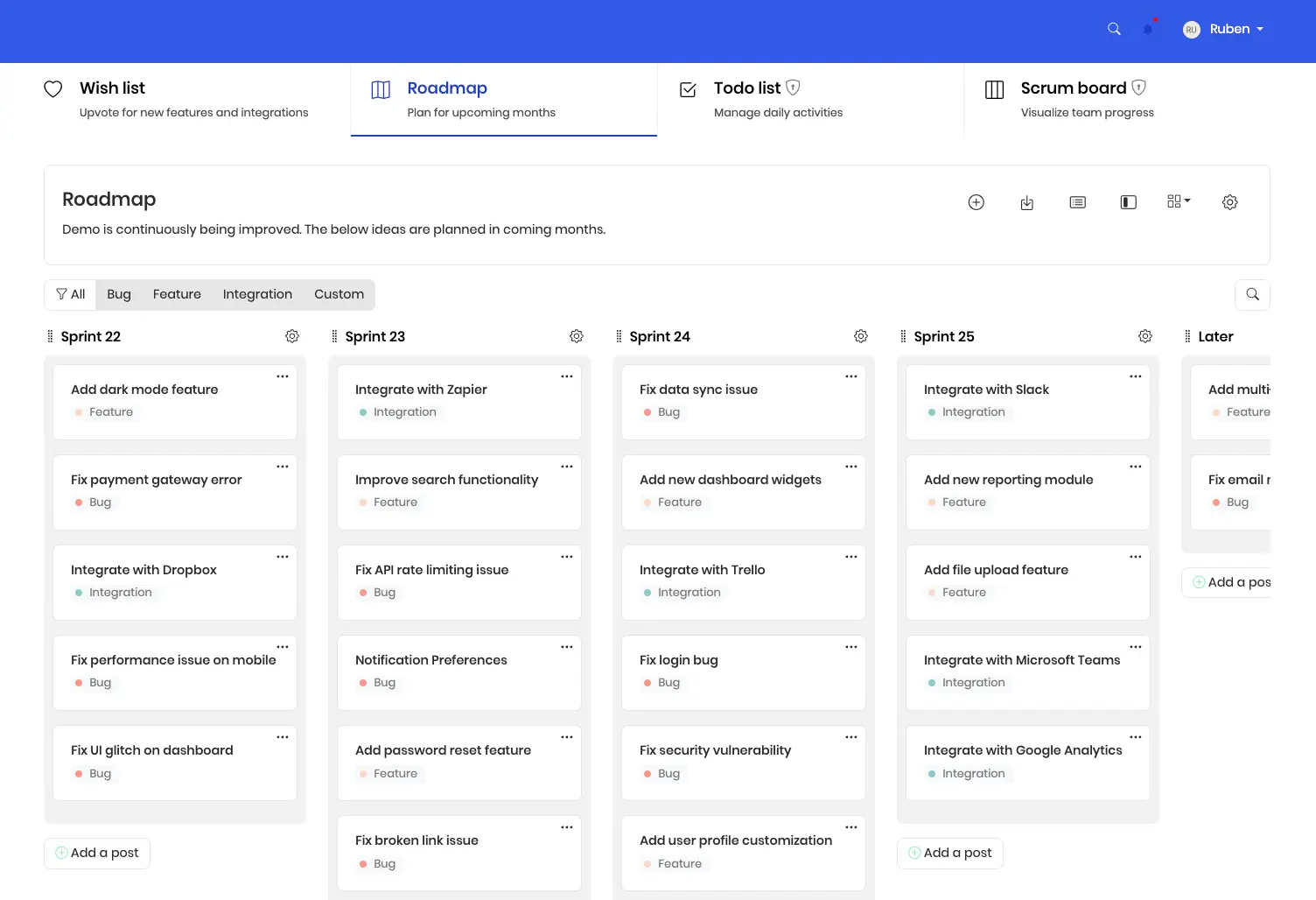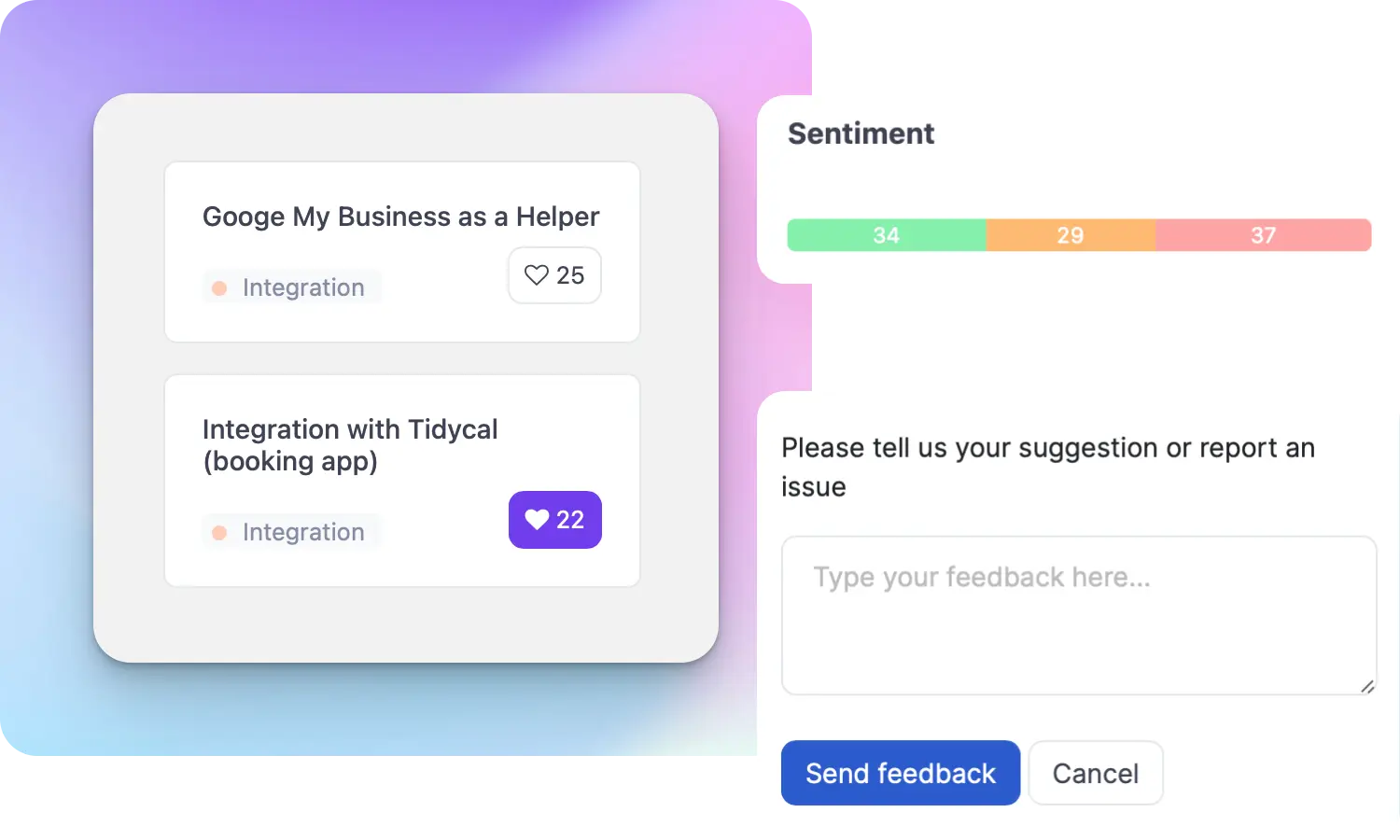7 Product Roadmap Examples for 2024: Find Your Perfect Fit

Ruben Buijs
Updated on Nov 19, 2025
Ever felt like your product development is a ship lost at sea? Or with multiple captains? Even the most seasoned product managers sometimes feel adrift. But here's the thing: the right product roadmap can be your North Star.
I've seen countless teams transform their product development process with the perfect roadmap. It's not just about having a plan—it's about having the right plan. One that aligns your team, delights your stakeholders, and drives your product forward.
So, let's dive into seven product roadmap examples that could revolutionize your approach in 2024.
What's a Product Roadmap?
A product roadmap is your product's strategic plan. It's a visual guide showing where your product is headed and how it'll get there. Think of it as a GPS for your product journey.
Why You Need a Product Roadmap
Here's why a roadmap is essential:
-
Alignment: Keeps your team moving in the same direction.
-
Resource Management: Helps allocate time and money effectively.
-
Prioritization: Clarifies which features matter most.
-
Communication: Makes it easier to keep stakeholders informed.
-
Progress Tracking: Provides a framework to measure advancement.
Now, let's explore seven types of product roadmaps that could transform your product development process.
Types of Product roadmaps
Here are 7 examples of effective product roadmaps to help inspire your planning process.
1. Now-Next-Later Roadmap
What it is: Organizes initiatives into three time horizons: now, next, and later.
Best for: Companies with flexible priorities or those in fast-changing markets.
Pros:
-
Simple and adaptable
-
Easy to reprioritize
-
Provides a balance of short-term and long-term planning
Cons:
-
Lacks specific timelines
-
May be too vague for some stakeholders
Example: Boei's roadmap shows immediate priorities, upcoming features, and long-term ideas without committing to specific dates.
2. Release Roadmap
What it is: Focuses on major releases and milestones.
Best for: Companies with less frequent, larger releases or those working on complex products.
Pros:
-
Clear long-term vision
-
Helps with marketing and sales planning
-
Good for high-level stakeholder communication
Cons:
-
May lack detail on smaller updates
-
Can be less flexible
Example: A Dutch insurer replaces their legacy policy administration system and made a release plan per PI.
3. Release Plan Roadmap
What it is: Focuses on upcoming product releases and their features.
Best for: Companies with regular release cycles.
Pros:
-
Clear timeline
-
Easy for stakeholders to understand
-
Helps manage customer expectations
Cons:
-
Can become outdated quickly if plans change
-
Might not capture long-term vision
Example: A software company planning quarterly releases shows major features planned for each release over the next year.
4. Kanban Public Roadmap
What it is: Visualizes work as it moves through different stages.
Best for: Teams focused on continuous delivery or those with a high volume of tasks.
Pros:
-
Clear workflow visualization
-
Easy to see bottlenecks
-
Adaptable to changing priorities
Cons:
-
Can become cluttered with too many items
-
May not show long-term strategy clearly
Example: Bookingpress uses this to track features as they move from ideation to development to testing to release.
5. Feature Roadmap
What it is: Outlines specific features to be developed over time.
Best for: Product-centric organizations or those with a clear feature backlog.
Pros:
-
Detailed feature planning
-
Clear for developers and product managers
-
Helps with release planning
Cons:
-
May overlook broader strategy
-
Can become too granular
Example: A CRM software company uses this to show planned feature enhancements over the next six months.
6. Goals Roadmap
What it is: Organizes work around strategic objectives.
Best for: Companies prioritizing OKRs (Objectives and Key Results) or those focused on outcomes over outputs.
Pros:
-
Aligns work with business goals
-
Focuses on value delivery
-
Flexible in how goals are achieved
Cons:
-
May be too high-level for some teams
-
Can be challenging to translate into specific tasks
Example: A SaaS company uses this to show how product initiatives align with goals like increasing user engagement or reducing churn.
7. Sprint Plan Roadmap
What it is: Breaks down work into short, manageable sprints.
Best for: Agile teams working in short cycles.
Pros:
-
Highly detailed
-
Great for short-term planning
-
Provides clear focus for each sprint
Cons:
-
May lack long-term vision
-
Can be overwhelming for non-technical stakeholders
Example: A mobile app development team uses this to plan two-week sprints, detailing specific tasks and story points for each sprint.
Choose the best public product roadmap examples
Selecting the most effective product roadmap depends on several factors like development methodology and team size.
Here are two tables to help you select.
To use these tables:
-
Look down each column to find the roadmap types that best match your situation.
-
The roadmap(s) with the most matches to your situation are likely to be good fits.
Table 1: Development and Team Factors
| Roadmap Type | Development Methodology | Release Frequency | Product Complexity | Team Size |
|---|---|---|---|---|
| Sprint Plan | Agile | High | Low-Medium | Small-Medium |
| Release Plan | Waterfall/Agile | Medium | Medium-High | Medium-Large |
| Now-Next-Later | Any | Any | Any | Any |
| Kanban | Agile/Kanban | High | Any | Any |
| Feature | Any | Medium | Medium-High | Any |
| Release | Waterfall/Agile | Low | High | Medium-Large |
| Goals | Any | Any | Any | Any |
Table 2: Stakeholder and Strategic Factors
| Roadmap Type | Stakeholder Preference | Time Horizon | Flexibility Needed | Focus |
|---|---|---|---|---|
| Sprint Plan | Technical teams | Short-term | High | Tasks |
| Release Plan | Mixed | Medium-term | Medium | Features |
| Now-Next-Later | Non-technical | Mixed | High | Priorities |
| Kanban | Technical teams | Short-term | High | Workflow |
| Feature | Product teams | Medium-term | Medium | Features |
| Release | Executives | Long-term | Low | Major releases |
| Goals | Executives | Long-term | Medium | Strategic goals |
Remember, you can always combine elements from different roadmap types to build a roadmap that perfectly fits your team's needs.
Tools for Creating Product Roadmaps
Using product management tools and ready-to-use product roadmap templates can simplify the roadmap planning process. These tools provide a variety of product roadmap options and features, helping you to create a public roadmap and effectively share your product vision.
Here are a few popular options:
-
ProductLift: Combines user feedback with beautiful roadmaps.
-
PowerPoint: Useful for high-level stakeholder communication
-
Aha!: Known for its strategic planning capabilities.
-
Excel: Good for simple roadmaps and custom layouts
-
Jira: Great for teams already using Jira for project management.
Best Practices for Product Roadmapping
Based on my 10 years of consulting experience at Ernst & Young, here are some best pratices I use:
Smart Ways to Adjust Priorities
Use tools like RICE (Reach, Impact, Confidence, Effort) or WSJF (Weighted Shortest Job First) to rank tasks. These help you decide what's most important as things change. Look at real-time data to make quick changes to your plan. This keeps your roadmap flexible and up-to-date with what's happening in the market and with users.
Getting Everyone Involved and Responsible
Use the RAPID method (Recommend, Agree, Perform, Input, Decide) to make clear who does what in decision-making. Have regular meetings with people from different teams to make sure everyone's on the same page. Use OKRs (Objectives and Key Results) to set goals that everyone can work towards together. This helps all teams feel responsible for the product's success.
Always Learning and Checking
Keep talking to users, trying out new ideas, and testing features. Use a "speedboat" approach to quickly test risky but potentially rewarding ideas. Draw out your thoughts using tools like opportunity solution trees. This helps you see problems and solutions clearly. By always learning and checking, you make sure your roadmap stays useful and tackles real user needs.
Creating Multi-Layer Roadmaps
Develop a product plan with multiple layers to capture different time horizons and levels of detail. The top layer outlines broad strategic themes aligned with your company's vision (multi year). The middle layer breaks these themes into more specific initiatives or epics (this year). The bottom layer details near-term features and tasks (this quarter or month). You should align the roadmaps with your business and product strategy and product vision.
FAQ: Product Roadmap Examples
What is a Product Roadmap?
A product roadmap is a visual tool that communicates your product strategy, outlines your product goals, and shows the journey of a product over time. It is an essential part of product management that helps product teams plan and communicate their strategy effectively. A roadmap is a strategic document that aligns your product team’s efforts with business objectives and ensures that your product will grow over time.
Why Are Product Roadmaps Important?
Product roadmaps are important because they provide a clear roadmap for the product team to centralize their efforts, communicate their product strategy, and align with business goals. A well-structured roadmap is a living document that evolves as the product and market change. It includes product features, timelines, and milestones, helping to ensure that your product remains relevant and competitive.
How Do You Create a Product Roadmap?
To create a product roadmap, start by defining your product vision and product goals. Identify key product features and map out the timeline for their development and launch. Consider using a product roadmap template to streamline the process. The roadmap should give a clear view of the product strategy in a way that all stakeholders can understand.
What is a Public Product Roadmap?
A public product roadmap is a roadmap shared with customers, partners, and other external stakeholders. It helps communicate your product strategy and vision, fostering transparency and trust. Building a public product roadmap allows you to share the journey of a product and receive feedback from your audience.
How Can Product Roadmaps Help Product Teams?
Product roadmaps help product teams by providing a structured approach to planning and executing product strategies. They offer a range of product roadmap templates to choose from, allowing teams to select the one that best fits their needs. Roadmaps allow you to plan around your product, ensuring a clear roadmap for development and launch.
What is the Best Product Roadmap Example?
The best product roadmap example is one that aligns with your specific product goals and business objectives. A clear roadmap that effectively communicates your product strategy and adapts to change is ideal. Examples of product roadmaps from leading companies can serve as inspiration when designing your own roadmap.
Should my roadmap be public?
It depends on your industry and competitive landscape. Public roadmaps can increase transparency and customer engagement but may also reveal strategic information to competitors.
How detailed should my roadmap be?
The level of detail depends on your audience. High-level stakeholders usually prefer less detail, while development teams often need more specifics.
How often should I update my roadmap?
Most teams review their roadmaps monthly or quarterly, but the frequency may vary based on your development cycle and market conditions.
What if we can't stick to the roadmap?
It's normal for plans to change. The key is to communicate changes clearly and explain the reasoning behind them.
Conclusion
The right product roadmap can guide your team, align with your business goals, and adapt to change. By understanding these seven product roadmap examples and considering your specific needs, you'll be well-equipped to create a roadmap that drives your product forward in 2024 and beyond.
If you're ready to turn your ideas into actionable plans, try ProductLift. Start your free trial today and take the first step towards building an amazing product roadmap.
